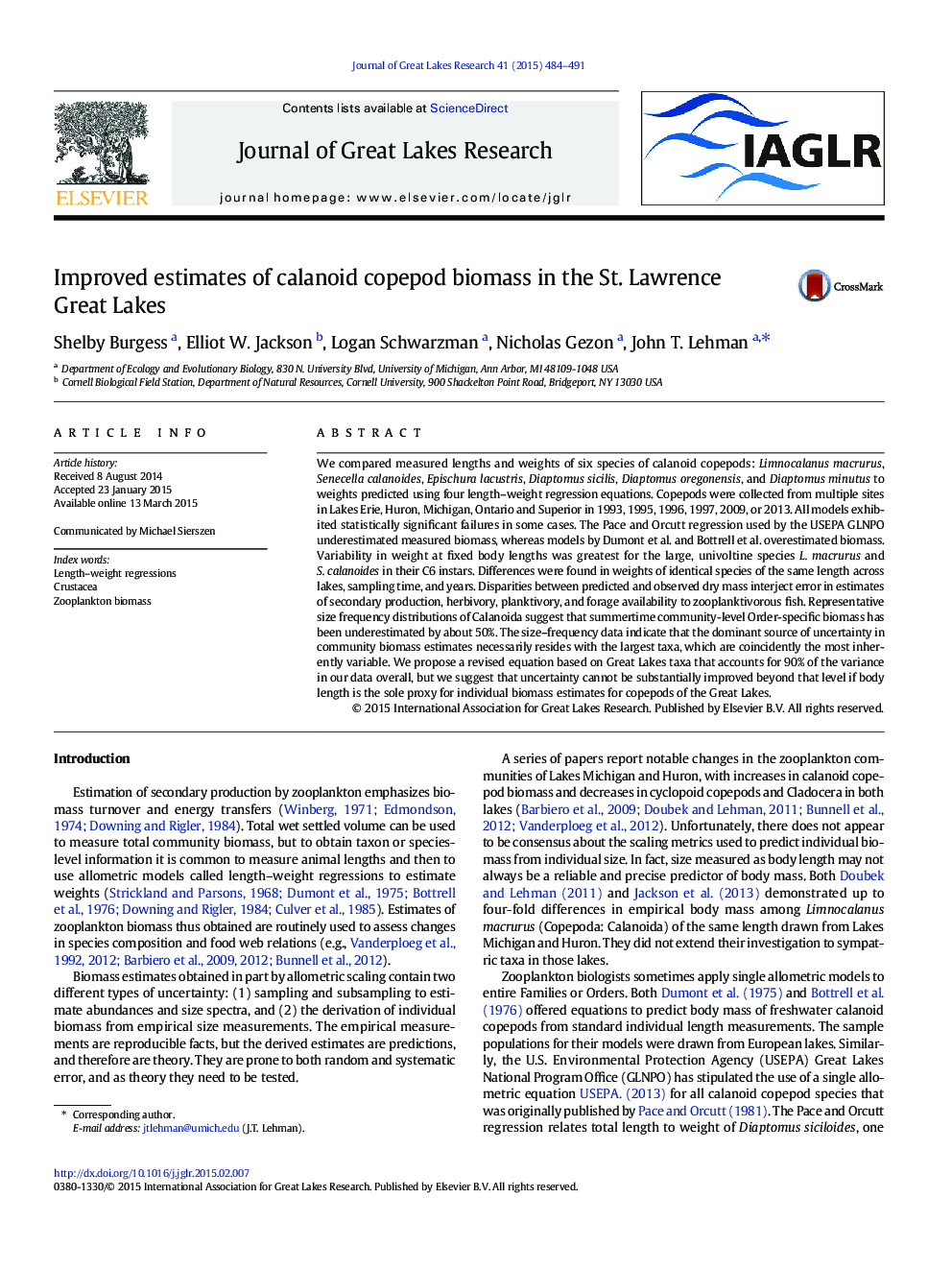| Article ID | Journal | Published Year | Pages | File Type |
|---|---|---|---|---|
| 6305015 | Journal of Great Lakes Research | 2015 | 8 Pages |
Abstract
We compared measured lengths and weights of six species of calanoid copepods: Limnocalanus macrurus, Senecella calanoides, Epischura lacustris, Diaptomus sicilis, Diaptomus oregonensis, and Diaptomus minutus to weights predicted using four length-weight regression equations. Copepods were collected from multiple sites in Lakes Erie, Huron, Michigan, Ontario and Superior in 1993, 1995, 1996, 1997, 2009, or 2013. All models exhibited statistically significant failures in some cases. The Pace and Orcutt regression used by the USEPA GLNPO underestimated measured biomass, whereas models by Dumont et al. and Bottrell et al. overestimated biomass. Variability in weight at fixed body lengths was greatest for the large, univoltine species L. macrurus and S. calanoides in their C6 instars. Differences were found in weights of identical species of the same length across lakes, sampling time, and years. Disparities between predicted and observed dry mass interject error in estimates of secondary production, herbivory, planktivory, and forage availability to zooplanktivorous fish. Representative size frequency distributions of Calanoida suggest that summertime community-level Order-specific biomass has been underestimated by about 50%. The size-frequency data indicate that the dominant source of uncertainty in community biomass estimates necessarily resides with the largest taxa, which are coincidently the most inherently variable. We propose a revised equation based on Great Lakes taxa that accounts for 90% of the variance in our data overall, but we suggest that uncertainty cannot be substantially improved beyond that level if body length is the sole proxy for individual biomass estimates for copepods of the Great Lakes.
Keywords
Related Topics
Physical Sciences and Engineering
Earth and Planetary Sciences
Earth and Planetary Sciences (General)
Authors
Shelby Burgess, Elliot W. Jackson, Logan Schwarzman, Nicholas Gezon, John T. Lehman,
